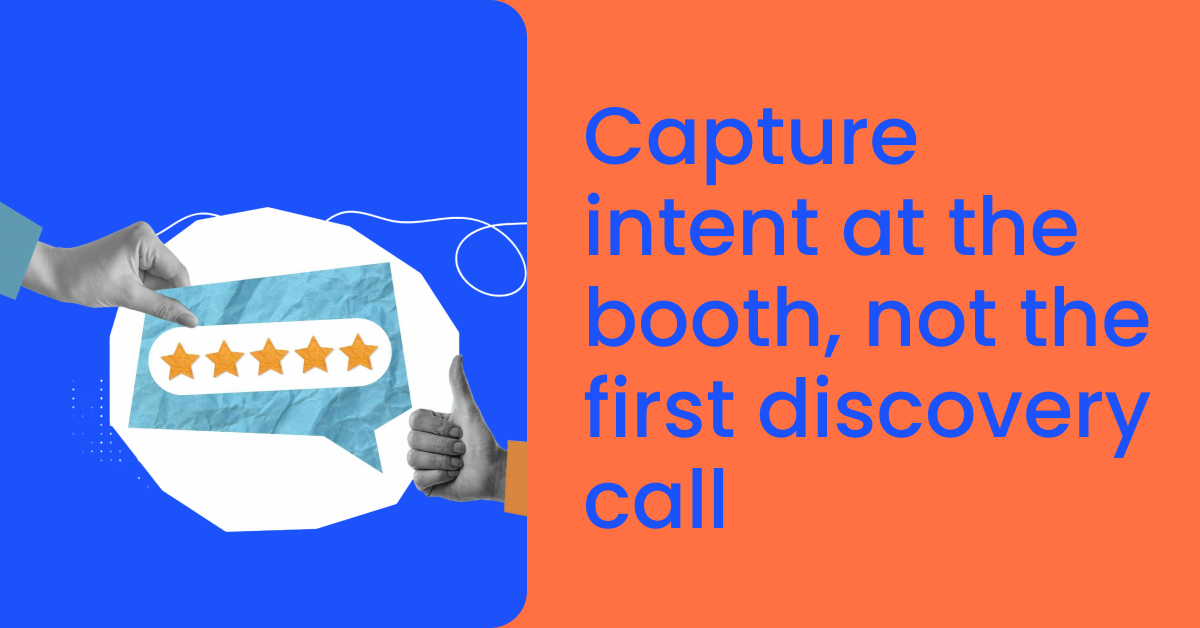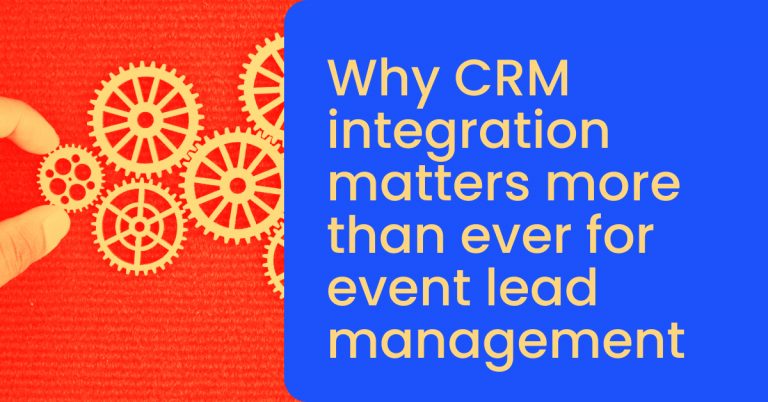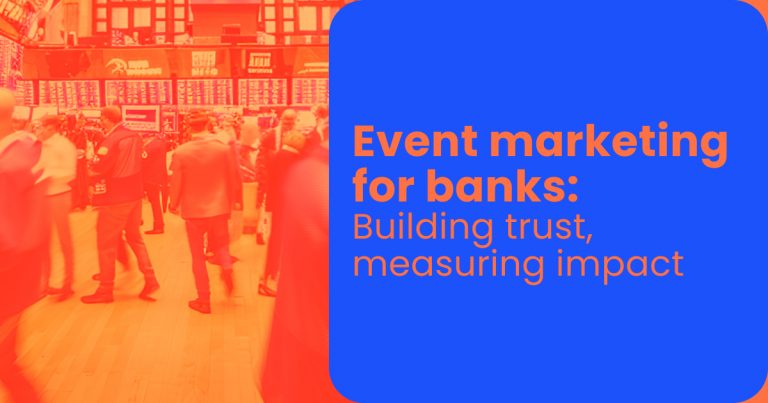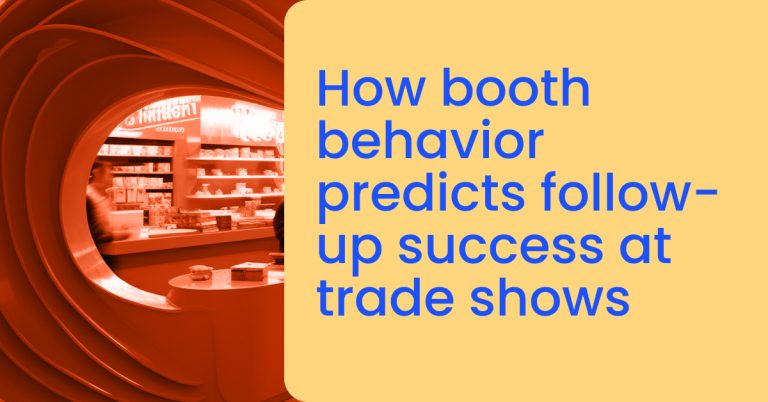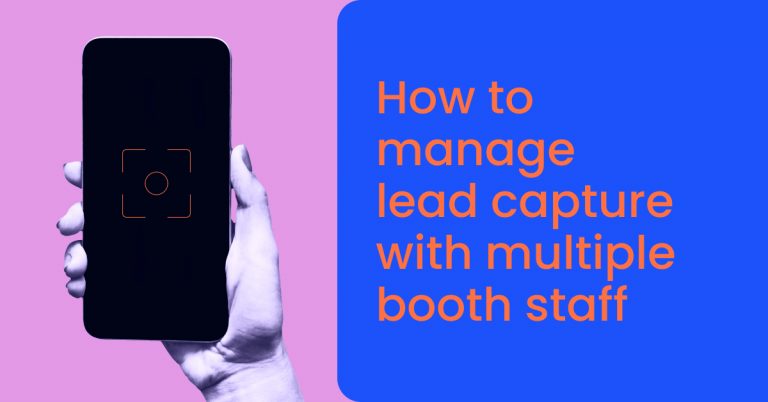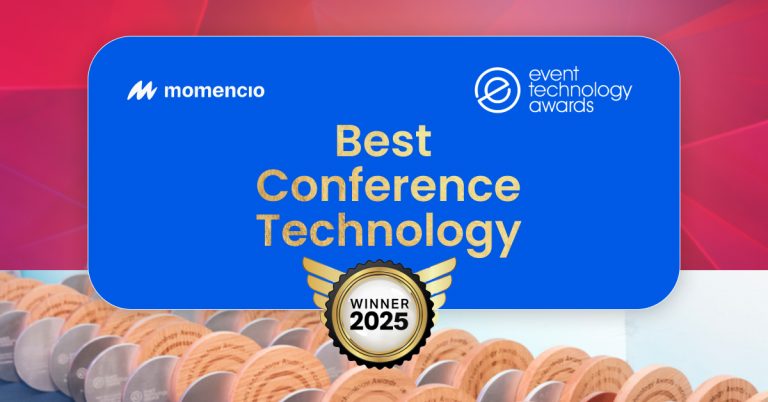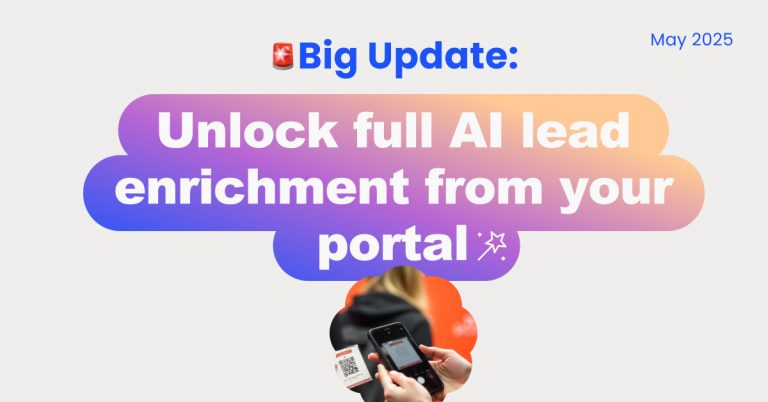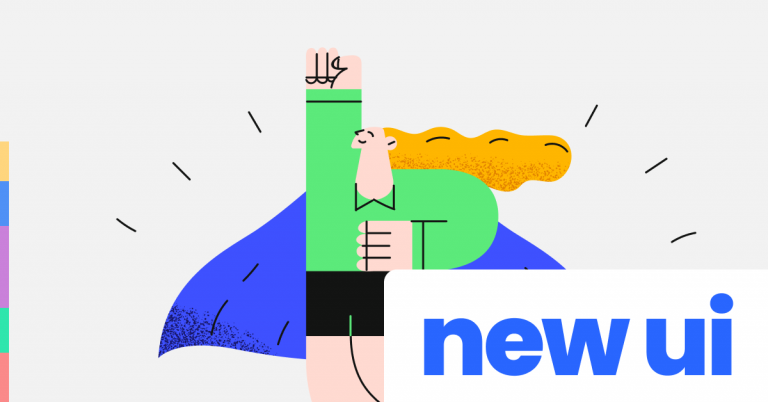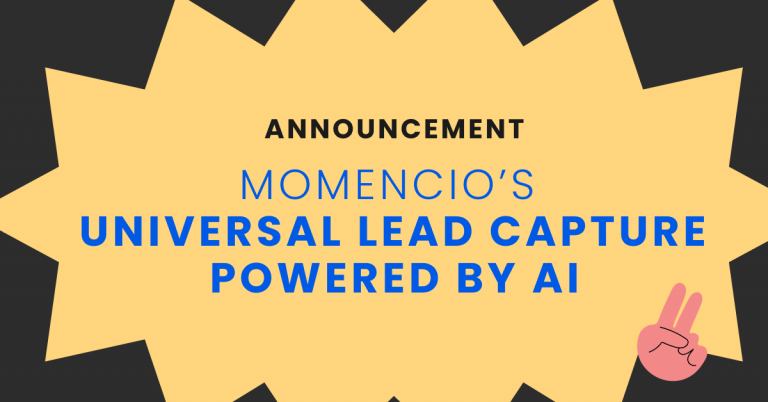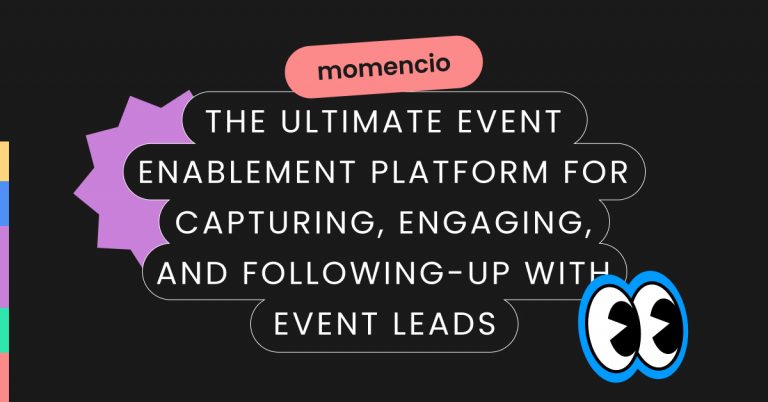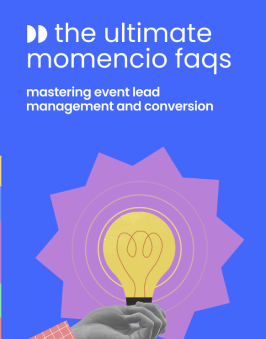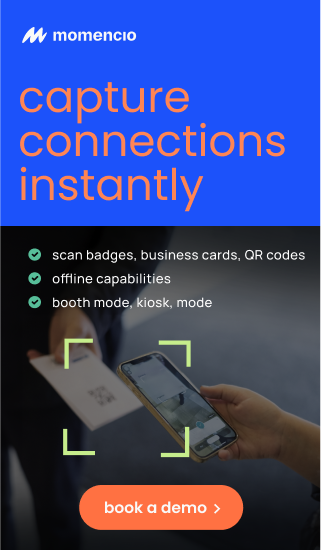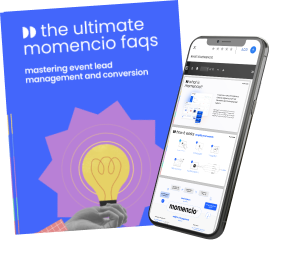Why most teams fail to capture intent where it actually happens
Every sales and marketing team today claims to have a system in place to “capture intent.” You’ll hear about intent signals, scoring models, AI detection, and behavioral workflows designed to identify when someone is ready to buy. But all of these systems are designed to detect intent after the fact. They’re post-event diagnostics, not real-time recognition. They operate on the assumption that intent is some buried signal waiting to be unearthed — that if you just analyze the data hard enough, you’ll find it.
But that’s not how real buying intent works — especially not at live events. Only 6% exhibitors said they were confident they could effectively convert trade show leads into opportunities.
At the booth, intent isn’t something you detect. It’s something that’s offered. In real time. By the visitor. It reveals itself in a tone of voice, a half-formed objection, a story they didn’t plan to tell, a moment of urgency that bubbles up unfiltered. It’s not formal. It’s not clean. And it rarely shows up twice.
When someone walks up to your booth and says, “We’ve been struggling to get visibility into our pipeline,” that’s not small talk. That’s the opening of a window. The intent isn’t in what they handed over — it’s in what they shared. And if your team is too busy scanning badges and handing out swag to recognize that moment for what it is, then all the technology in the world can’t help you capture it later.
The booth is the first — and often the only — place where raw, honest buying intent surfaces. And yet, most organizations treat it like a lead collection station rather than a live discovery opportunity. That misalignment is why pipeline stalls. Because by the time Sales tries to interpret the data, the moment it was supposed to capture has already passed.
The biggest myth in sales: intent lives in the CRM
Sales teams often talk about buyer intent as if it’s a static record that lives inside the CRM, waiting to be acted upon. But anyone who’s actually sold in the real world knows better. Intent doesn’t live in form fills, email opens, or webinar attendance. Those are just shadows — data trails left behind after the real signal was given or missed.
What lives in the CRM is just an echo. It can’t tell you how fast someone spoke when they mentioned their Q3 goals. It won’t show you the slight hesitation when they asked about pricing. It won’t highlight that moment when they shifted their posture after hearing about a use case that hit too close to home. That’s the information that actually signals purchase urgency. But it’s lost if not captured at the exact moment it shows up — and that moment, nine times out of ten, is at the booth.
We’ve been conditioned to believe that the follow-up call is where discovery begins. But for many buyers, by the time the discovery call happens, their attention has moved on. The problem they were fired up about at the event? It’s now buried under internal tasks, budget constraints, and shifting priorities. That spark of urgency — the thing that makes someone lean in — doesn’t often survive past the week of the event. Which means your shot at capturing real intent is gone.
Events give us a live feed of real-time buyer emotion. But instead of leveraging that, most teams turn them into passive data capture exercises. Booth reps scan badges, toss brochures, and expect Sales to figure it out later. It’s not just lazy — it’s ineffective. Because you’re no longer chasing a lead, you’re chasing a ghost of the lead’s former urgency.
What lead intent actually looks like
Intent isn’t a checkbox or a dropdown value. It’s not “MQL” or “SQL.” In reality, intent looks a lot like real human behavior. A field marketer knows someone’s serious when they start asking hard questions. When they challenge the demo. When they pull over their colleague and say, “You need to see this.” It’s the kind of stuff that’s hard to script but easy to spot — if you’re present enough to catch it.
The problem is that most event teams don’t train for this. They train for features, benefits, and pitch decks. They don’t train to spot urgency disguised as doubt. Or to recognize when a quiet, skeptical buyer is actually the economic decision-maker. Or to hear the shift in tone that happens when someone goes from “just looking” to “I need this now.”
And when you don’t recognize intent in the moment, the only option left is to reconstruct it afterward — from notes, tags, or AI summaries. But by then, the richness is gone. What remains is data without depth. You’re trying to rebuild a story from the transcript when the real power was in how it was told.
Capturing intent means being radically attentive during the conversation. It means listening beyond what’s being said. And most importantly, it means equipping your event team to recognize the difference between curiosity and urgency. If that training doesn’t exist, your event pipeline will always underperform — no matter how good your CRM hygiene is.
Why the booth is the most honest moment in the buyer journey
At the booth, buyers are disarmed. They’re in exploration mode, not defense mode. They’re not being recorded, they’re not being sold to over Zoom, and they haven’t yet crafted the “vendor conversation” version of their story. What you get at the booth is real, unguarded, and often emotionally charged.
That’s why the booth is the most honest part of the entire buyer journey. It’s where intent reveals itself not through polished responses, but through candid confessions. A CMO might never admit on a call that they’re behind on pipeline targets — but they’ll blurt it out at a booth conversation if your team builds enough trust in those 3 minutes.
It’s not about running discovery. It’s about building rapport quickly enough that the buyer lets their guard down. When that happens, the truth comes out. And that truth is the most accurate, unfiltered insight into their pain and urgency — the very thing Sales is trying to uncover weeks later through cold outbound and scheduled demos.
What happens at the booth is lightning in a bottle. But only if you treat it that way. If the booth is just a lead collection point, you miss the chance to document the real reason someone might buy. And once that window closes, they’ll never say it again — at least not as honestly.
Intent can be observed later. But it’s only granted once.
If you want intent, you need to earn it — not scan it
The obsession with automation has tricked teams into thinking they can extract buying intent without interaction. Tools now promise “intent signals” based on digital behavior — time on page, asset downloads, click-throughs. And while these signals are useful, they’re surface-level. They tell you what someone did. They don’t tell you why.
At an event, you get the “why” — if you’ve earned it. But most teams treat leads like they’re entitled to them. Badge scans become a metric. The more you scan, the more “successful” the event. But volume isn’t value. You can walk away with 600 leads and zero insight — or walk away with 60 that you actually understand.
Earning intent means showing up differently. It means having conversations that are tailored, curious, and situationally aware. It means giving buyers something to react to — not just a slide, but a perspective. It means asking better questions and reading subtle cues. And it means recognizing that the true competitive advantage in event marketing isn’t the booth design or giveaway — it’s your team’s ability to listen deeply and respond smartly.
You can’t automate insight. You have to create the conditions for it to emerge. And that only happens when your team is trained to recognize the difference between noise and signal.
Reframing your follow-up: from generic outreach to narrative handoff
Here’s the part where most companies fall off a cliff.
They spend six figures on the booth, send twenty people to man it, and scan hundreds of badges — then send the same “great meeting you at the event” email to everyone in their CRM. That email isn’t a follow-up. It’s a missed opportunity. Because what the buyer gave you at the booth was a moment — and you sent them back a template.
The follow-up needs to pick up where the booth conversation left off. If they told you about an integration challenge, your microsite should lead with that. If they brought up timing, your rep should mention it in the first line. If they reacted strongly to a specific case study, that should be the anchor of your follow-up narrative.
The goal isn’t to “nurture.” It’s to extend the conversation in a way that proves you listened — and understood. That’s what separates noise from memory. When a buyer feels like they were truly heard at the booth, they’re far more likely to respond to your outreach. Because now, the message is personal. It’s about them. And it feels like a continuation, not an interruption.
Intent is fragile. Mishandle it, and it vanishes. But if you can hold the thread from booth to follow-up, you turn a spark into momentum.
How to act while the signal is still alive
Intent has a half-life. And it begins to decay the moment the conversation ends.
If your team captures a real moment of buyer interest at the booth and then waits until Monday to follow up, you’ve already lost 60% of the emotional weight behind that conversation. That’s not just a delay — it’s a waste.
So how do you act while intent is still alive?
What top-performing field marketers and sales teams do:
- Log while it’s fresh
Reps don’t wait to debrief after the show. They immediately record a voice note or jot down raw notes the moment the conversation ends. Keywords, emotional cues, objections — all captured live. - Send something personal
Instead of a generic “thanks for stopping by,” they use tools like momencio to send a personalized microsite within minutes. This site includes content tailored to what the visitor asked about — product sheets, case studies, demo recaps — all trackable. - Trigger a fast sales handoff
Sales is notified not based on a lead score, but based on live behavior. Did they open the content? Rewatch the video? Share it internally? That engagement acts as your real-time hand raise. - Stay alert to change signals
Not every intent signal leads to a closed deal. But smart teams monitor ongoing behavior. If a lead goes cold, that’s a signal too — and it allows you to adjust your outreach strategy accordingly.
The goal is to preserve the warmth of the booth conversation before it cools. Because once it cools, it can’t be reheated. You can’t recreate tone, tension, or urgency on a Zoom call. You can only carry it forward — if you move fast enough.
Your event intent checklist
If you want your booth to convert real intent into pipeline, you need a system. Not a script. Not a spreadsheet. A field-tested, real-time checklist that makes this habit-forming.
Here’s what that looks like:
Before the show:
- Train your booth team to recognize tone, urgency, and non-verbal cues
- Align on what counts as real intent vs surface interest
- Set up your personalized microsite engine (e.g., through momencio)
- Map which content gets sent based on lead behavior
During the show:
- Capture every high-intent conversation in 30 seconds or less (voice or note)
- Log emotional triggers, objections, and buying timelines
- Send the microsite immediately with content matched to their interest
- Flag high-priority leads to sales with custom context
After the show (first 48 hours):
- Review content engagement on the microsite — not just email opens
- Prioritize follow-ups based on behavior, not job title
- Customize outreach with actual booth notes — not templates
- Track replies vs drop-offs, and adjust sequencing accordingly
This isn’t just about being efficient. It’s about being respectful of the moment. If someone offered you a window into their pain and urgency, you wouldn’t ignore it. You’d act like it mattered.
That’s how intent should be treated.
The shift from detective to receiver
Most teams treat sales like detective work. You’re piecing together clues. Analyzing breadcrumbs. Trying to figure out what someone wants, after they’ve already left.
But that’s outdated.
Intent isn’t a puzzle to solve. It’s a signal that’s granted.
And the booth is the only time it’s offered freely — without filters, without automation, without delay. After that moment, everything else becomes an approximation. You’re relying on AI to guess what a human just told you five minutes ago. You’re playing catch-up in a race you already ran.
Stop acting like intent is something you discover. Start acting like it’s something you’re trusted with.
At the booth, you’re not capturing intent. You’re being handed a moment that won’t come back. Treat it accordingly — and you won’t need a second chance.
Where momencio fits in
This isn’t a product pitch. But we’d be lying if we said this philosophy didn’t shape how we built momencio.
The platform was designed around one idea: that real intent is captured live — not inferred later. So everything from our real-time microsite creation to our AI-driven engagement tracking is engineered to help field teams recognize, act on, and extend those high-intent moments before they decay.
You need deeper context, real follow-through, and a system that remembers.
That’s the future of booth intelligence.
And when your event team understands that — really understands it — everything changes.
